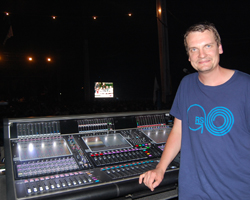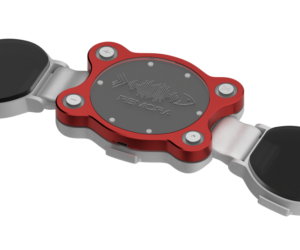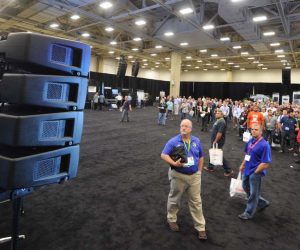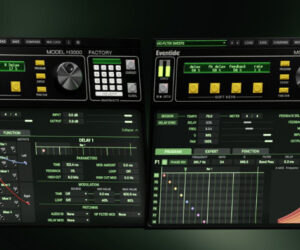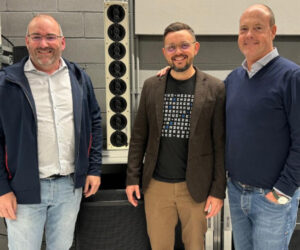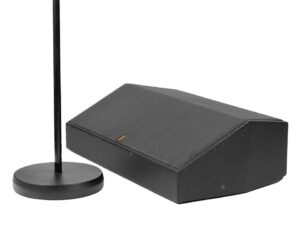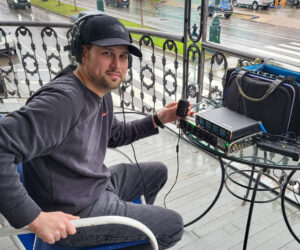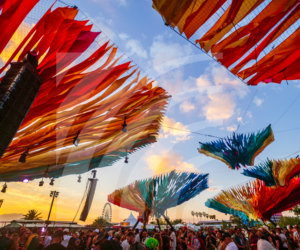British indie rockers Doves are currently headlining their first world tour in four years in support of their latest and fourth outing, Kingdom of Rust. Front of House Engineer Paul Ramsay specified a DiGiCo SD7 digital console for the U.K./Ireland bigger venue shows and a DiGiCo SD8 digital console for the smaller club tour in the U.S.
Meanwhile, Monitor Engineer Ian Barton has been using an SD8 for the entire tour run.
As a result of the band’s streamlined transportation accommodations for the U.S. leg of the tour (band bus plus gear trailer), plus the moderate venue sizes (1,000 to 3,000 capacity), and a scaled-down production budget, the group needed compact consoles to handle FOH and monitor necessities, with a small footprint that could handle the varying venue sizes with ease.
“Size was definitely a big issue for this tour,” Ramsay explains. “The gear trailer needed to fit everything—from the band’s backline equipment, my FOH console and outboard gear, monitor console and in-ear systems, snakes, mic stands, sub boxes, and also a projector, lighting desk, back drops, etc. Basically, it’s our entire production in a trailer. The FOH and monitor consoles fit the space with room to spare at the back.”
Ramsay has been mixing on DiGiCo consoles since the start of 2003, first on a D5 and later an SD7. Working on an SD7 initially on tour with The Who in 2008, he was impressed with its user-friendly look and control surface right out of the gate.
“I think it is stunning! I love all the functions, the color-coding, and it has a very analog feel to it,” Ramsay says. “The dynamic EQ and multiband compressor were a huge bonus, not to mention the I/O counts. After hearing it, it does sound slightly different than the D5; the high-end sounds sweeter and the low-end tighter.”
When he eventually migrated to the SD8 for the first time, he was somewhat unprepared for what to expect. “At that point, I hadn’t actually mixed on one, but what blew me away about the SD8 was when I was pre-programming the show on my laptop using the RCE (Remote Control Editor). I didn’t think its technology would be so much like the SD7, especially being so much less expensive. But in fact, the sound quality is equally as good. OK, so it doesn’t have the multi-band or dynamic EQ, or the dual engine redundancy, but with only one screen it’s still really quick to get around.
“I had to ring DiGiCo to confirm the cost (U.S. list $53,000). I would have still been impressed if it had been double the money. I have now had the chance to mix the same band on first the SD7 and then the SD8, and I felt quite comfortable moving from one to the other, and the sound quality was equally as good.”
As for inputs, the tour requirement is approximately 60 inputs total—from the stage, for various stereo feeds and effects. “We are running 42 inputs from the stage and I have some VT playback at FOH for the intro, which is a stereo feed. I’m running three internal and five external stereo effects, with an iPod and mic at FOH, which brings up to around 60 inputs total. As we are using house PA generally, it adds just a left and right to this and maybe an infill or delay, so that’s maybe an additional four outputs, and I also have sub setup on a mono aux if required. In addition, I’ve got eight stereo effects sends, a couple of sub groups for kick and snare, which I compress at FOH on internal compressors, and that’s it. It’s pretty simple and straightforward.”
In order to keep his packaging small, Ramsay is using all the internal EQ as well as delays when necessary on inputs and outputs. In addition, he’s using snapshots for each song, which changes faders, dynamics, mutes, pans, and internal/external effects fired via MIDI. So at the start of each song, he’s already ready for it with adjustments made and programming set, and can just concentrate on listening and tweaking the mix.
Virtual soundchecking has literally removed the need for nightly sound checks, and Ramsay also uses this tool on an Apple MacBook Pro in tandem with a RME MADIface, to archive shows nightly. “I record broadcast wave files straight into the laptop with great results,” he explains. “I’m archiving every show for potential use as a future B-side or a live album, because for the cost of hard drive space, we can literally record every show on the whole tour. In fact, I’m so impressed with the MADIface, I’m buying one for myself.”
On side-stage monitors is engineer Ian Barton (Chemical Brothers, The Charlatans, Air), who is handling 41 inputs and 21 outputs from an SD8—which includes mixes for floor wedges, in-ear monitors, a subwoofer and drum seat ‘thumper’. Apart from a handful of one-offs on a D5 in the past, this was his first experience using a DiGiCo console for a lengthy tour.
“I had used a D5 years ago and found it to be very friendly compared to other digital consoles I had used. With the SD8, I like being able to update snapshot groups or single snapshots with ease, while still having my eye on the artist and show,” Barton says. “Also this console has enough outputs in a single layer to not have to switch constantly between layers during shows—which has been an issue when so much is happening on the stage… knowing what position your board is in needs to be instantaneous! The ability to run two solo outputs for in-ears and wedges independently and simultaneously is easy to do with the SD8. Overall, it sounds great. Having used wedges everyday in the harsh land of U.S. club/theatre touring, this was a dream: Trailer, backline, two SD8s, tour bus… ‘Let’s go!’”


